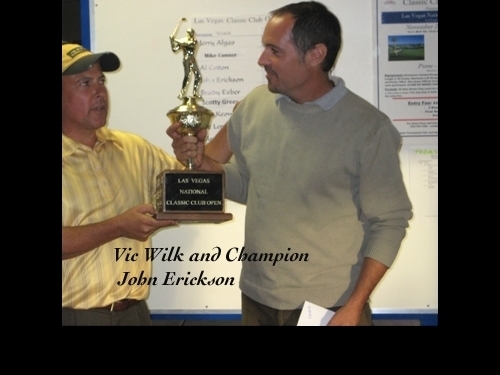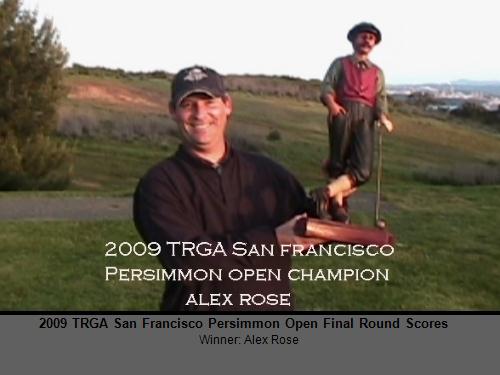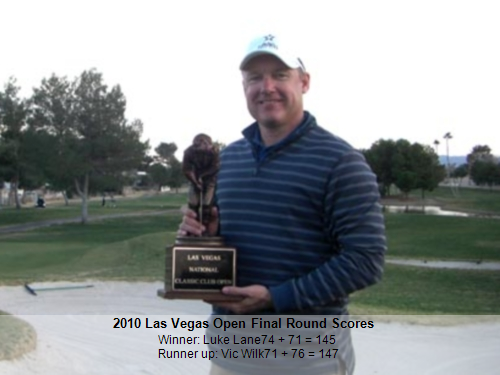TRGA RULES OF GOLF (OFFICIAL TOURNAMENT PLAY)
I: STARTING THE HOLE AND ESTABLISHING “IN PLAY”
The ball may be teed or played from the ground between and behind the markers on the area known as the tee box and not farther back than 3 yard like paces… If the ball falls off the tee while the player addresses the ball, it may be re teed without penalty. If the player’s ball moves during the swing, the player simply must continue the playing of the shot. A player teeing off in front or outside the teeing area shall replay with a one stroke penalty.
A. MISSING TEE TIME
A player is deemed late and out of turn once a fellow player has hit their second shot on the first hole and will incur a one stroke penalty. Players arriving after their pairing group have finished the first hole may be re-paired into a later grouping at the discretion of the ruling committee incurring a two stroke penalty.
II: PLAY THROUGH THE GREEN
The ball shall be played down from tee to green unless the ball has been lost, exited the boundaries of the property (OB), or deemed unplayable by the player, in which case the player shall follow the protocols set forth by The Universal Dropping Procedure. (see section III: UNIVERSAL DROPPING PROCEDURE)
A. THE PLAY OF THE BALL
- A player may remove loose impediments as long as the ball does not change position.
If the ball changes from its position a one stroke penalty shall be incurred.
- If a ball is moved by the wind, or any other outside agency such as a spectator or animal, the ball shall be replaced to it’s original location without penalty.
B. IDENTIFYING THE BALL
A player may rotate the ball without changing its position to identify it.
C. PLAYING WRONG BALL
A player shall not play the wrong ball or an opponent’s ball. The wrong ball shall be replaced as close to it’s original position as possible with a fresh ball, and the player who played the wrong ball shall play their correct ball adding a one stroke penalty.
D. BALL STRIKING PLAYER
- If a player’s ball strikes himself, his equipment (including cart) or his caddie, the penalty shall be one stroke, and the ball shall be played from where it lies.
- If a player’s ball unintentionally strikes another player, or an opponent’s equipment or caddie, it is considered the rub of the green, and the ball shall be played from where it lies.
E. PUSHING OR STRIKING THE BALL TWICE
- A player making a swing and unintentionally striking the ball twice shall not be penalized and will proceed playing from the ball’s new resting location. A player intentionally striking a ball twice or striking a moving ball shall replay the stroke and incur a two stroke penalty.
- Likewise, a player shall not push, drag or scrape the ball void of a specific intended momentary impact. Two stroke penalty shall be incurred.
F. SAND and WATER PLAY
- A player may not ground his club in a sand trap or water trap. Penalty is one stroke.
- A player may gain reasonable footing but may not build a stance in either water or sand. Penalty one stroke.
G. STAKING AND BOUNDARIES
TRGA does not acknowledge colored stakes defining hazards or internal boundaries. TRGA does acknowledge course boundaries such as fences, yards, roads, parking lots, clubhouse grounds and other obvious lines of demarcation defining the playing area or course boundary therefore requiring Universal Drop Procedure.
The Universal Drop Procedure shall be implemented for lost balls, unplayable lies, balls laying outside the course boundary or otherwise exiting the common playing area. A player may deem their ball lost or unplayable at any time and option for the universal drop procedure.
III: UNIVERSAL DROP PROCEDURE [Diagrams](file:///Users/johnminer/Desktop/trgaweb/Universal_Golf_Drop.html)
All Drops are taken facing the hole and dropped over the shoulder. If the ball rolls forward past the player’s feet, then the player may place the ball by hand.
Step One:
Determining Location:
The last suspected location of the ball determined by reasonable consensus within the group, meaning the general area where the ball likely came to rest or would be located if it left the boundaries of the property (excluding bouncing on concrete or other similar surfaces), was generally believed to have been lost in this area, or found to be unplayable in water, brush, trees or any other situation deemed by the player to be “unplayable”.
Step Two:
Locate the" back in play" point near the middle of the fairway.
A player taking a drop must establish both points, where the unplayable ball lay or lost ball would have laid, and then a point approximately middle of the fairway consistent with the general shape of the hole.
Step Three:
30 yard-like paces straight back from the back in play point, then the ball may be hand placed by the player and is then considered back in play with the addition of a one stroke penalty.
- For drops taken from beside or over the green, 30 yards back from the front edge of the green.
- If no area is available to drop short of the green because of water or other non fairway conditions, either a designated drop area should be defined or the best reasonable option consistent with the Universal Dropping Procedure should be agreed upon within the group.
- A player is not required to drop a ball in a hazard such as a sand bunker that lies
in the fairway.
- For holes with extreme dogleg shape, the player is not required to drop the ball outside an area generally considered as the fairway in the event 30 yards straight back from the hole places the ball off the fairway. The player may adjust to place the ball back into the fairway consistent with the general shaping of the hole being played.
IV: FREE RELIEF EXEMPTIONS
(All Drops are taken facing the hole and dropped over the shoulder. If the ball rolls forward past the player’s feet, then the player may place the ball by hand.)
A player may take a free drop from a cart path or sprinkler head or similar irrigation or drain grate only if such an obstacle is situated in the area known as the fairway and the ball rests on it, or near enough to create reasonable concern for striking it with the golf club and injuring the player. A player does not get relief from stance or standing upon such a surface. The Player may then move the ball one pace or yard dropping over their shoulder no closer to the hole.
- CASUAL WATER
In the event of water pooling on the fairway, a player may take nearest relief no closer to the hole without penalty if the ball itself is over halfway submerged in water, meaning the level of water is covering 50% of the ball above its equator.
- EMBEDDED BALL
If a ball has been embedded in it’s own pitch mark in an area clearly defined as the fairway or within 10 yards of the green, the ball may be lifted, cleaned and placed within 6 inches of it’s found location not closer to the hole. A ball may not gain relief from an area such as a sand bunker, edges of a water hazard, or any other unkempt area through or near the green. In the event the ball has embedded at 10 yards from the green, any dispute on exact measurement should go in favor of the player.
- STAKED TREES or SHRUBS
A player may take relief from a staked tree or sapling only if the swing of the player poses a significant threat to the safety and well being of the protected plant. A mature tree with a stake still attached, but clearly no longer required for its support, would not qualify for relief. Drop to nearest full relief, as above.
V: ON THE GREEN AND HANDLING THE PIN
A. A player may mark and clean their ball once on the area known as the putting green.
B. A player may move his marker out of the line of another player and then replace its position and is required to do so.
C. A player may elect to have the pin remain in the hole or have it removed.
D. Once a player has chosen to remove the pin, they must finish out the hole with the pin removed.
As common courtesy to other players, players choosing to putt with the pin in, should putt first.
E. There is no attending the pin. The pin is either in or out.
F. A player may not pull the pin out while playing a shot from off the green.
G. Players may fix ball marks and tap down spike marks and fix a damaged cup prior to playing their putt. However, a player may not press a furrow into the green to aid the roll of their putt.
H. A player may not draw a line on the green, nor may a caddie stand behind the golfer to aid in alignment. The penalty is one stroke.
I. If a player’s ball strikes that of another player’s upon the green, the stroke must be replayed from its original position, and a stroke is deemed to have been taken. The struck ball must be replaced in its original location. J. A player may not roll a ball across the green by hand or foot. Penalty one stroke.K. A player may not straddle the line of his /hers putt while making the stroke. Penalty one stroke.
L. A player may not enlarge or depress the edges of the hole. The penalty is one stroke.
M. When any part of the ball overhangs the lip of the hole, the player is allowed enough time to reach the hole without unreasonable delay and an additional ten seconds to determine whether the ball is at rest. If the ball falls into the hole in the time beyond ten seconds, a stroke is considered to have been taken.
VI: FINISHING THE HOLE
A ball is considered holed when it is secured inside the edges of the cup or wedged between the pin and the cup.
VII: ADVICE
Players may offer or share advice during the game, but are not required to do so.
VIII: PRACTICE
A. A player may not hit extra practice shots during or between holes in a proper competition.
B. A player may not hit extra putts on the green after the hole has been completed.
IX: DAMAGED EQUIPMENT
A. A player may not replace a damaged club during a round.
B. A player may replace a damaged ball after a hole has been played. A player may replay a shot if their ball fractured into two or more pieces upon striking it without penalty. A cut or scuffed ball may not be replaced.
X: SCORING AND SCORECARD
A. An official course record or tournament scorecard must have at least two signatures.
A player must keep the score of an opponent. In the event of a dispute, the players should work toward a resolution of the conflict at the time of the incident. If the issue remains unresolved, the players must take their dispute to the designated ruling official AFTER THE ROUND to keep in the spirit of swift play. A player signing for a higher score than what was actually played must accept the higher score. A player signing for a lower score should have the score properly re-calculated and then shall incur a one stroke penalty.
XI: RULES OFFICIATING
Disputes on the course as to where drops should be taken or other disputes, should be resolved within the group first, but if a dispute still continues, the tournament rules official will hear both (all) sides after the round, and decide if the player received a significant unfair advantage. If the official deems the drop or inequity proposed by the opponent was significantly questionable, a one stroke penalty may be assessed and the decision will be final without contest. Players agree to the authority given the designated ruling official before commencing play.
XII: EQUIPMENT FOR OFFICIAL TRGA EVENTS
A. NUMBER OF CLUBS
A player may carry up to 11 irons including the sand club, no more than one putter, and up to 4 woods including the driver. A maximum of 16 clubs. A player using more than 16 clubs will be penalized two strokes per round per extra club.
B. WEDGES
A player may not carry a wedge or sand wedge with a loft greater than 56 degrees. No player may carry more than two clubs over 50 degrees in loft. Penalty for nonconforming wedges is two strokes per round per club.
C. WOODS
- Woods must be made of an organic wood product, solid or laminated.
- The face of a wood may be three inches wide, two inches high.
- No woods may exceed 44 inches in length. No woods lighter than 13 ounces (370 grams) total dead weight are allowed. Penalty for non conforming woods is two strokes per round per club.
D. IRONS
Irons must be forged steel, cavity back style irons are not conforming for proper competition.
E. GROOVES
No square grooves in irons are allowed. V grooves or no grooves only in the traditional form.
F. PUTTERS
- The putter must be the shortest club in a player’s bag.
- Long putters are not allowed. A player may not brace the grip end of the club against their body
as this is not deemed a golf stroke.
- Putters may not exceed 3 inches in face width, 3 inches in depth, or 2 inches in face height
G. SHOES AND SPIKES
Steel spikes on golf shoes are allowed.
H. SHAFTS
Shafts in golf clubs must be made of either conventional steel or wood.
I. GRIPS
Grips must not be molded to the shape of the players hands and must have a continual tapered shape downward.
For further questions on TRGA GOLF RULES feel free to contact
Traditional Rules of Golf




